 |
1
Is this a cross frame? According to an advertisement from 1952 of bicycle manufacturer Vesting
from Haarlem (NL) it is. Gazelle built roadsters with this frame design
from the thirties on until the sixties, Burco did so in the early
post-war years.

Sports bicycles with this type of frame are called "mixte". Today in France,
Germany, Denmark and other countries, this is a standard frame design, while in the
Netherlands it is less common. Here most mixte bicycles were made by Batavus in the
seventies and eighties.
|
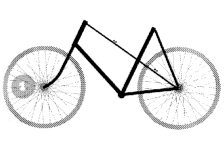
|
 |
2
Simplex 1935 - 1957 (with joints between the tubes on the crossing point;
the diameter of the single cross tube is 7/8 inch).

Juncker 1938 - 1960 (without joints between the cross
tubes; diameter of the single cross tube: 1 inch).

This design had many British precursors. The most beautiful design was made by Centaur.
|
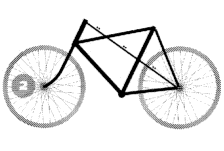
|
3
A very common design of the "2nd generation" (app. 1900 - 1930).

Was also built in the Netherlands (mostly under British licence) by: B.A. Jansen
(brand: Yankee Style), Bingham & Co. (brand: Eenhoorn), Eysink
(around 1902). |
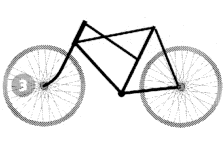
|
4
This design is a Raleigh patent from befor 1900 and was copied by many well-known
manufacturers:

Raleigh (from c. 1900, at least until 1937)
Fongers (from 1901 till ?)
Simplex (in the early years of the 20th century)
Eysink (at least between 1905 - 1910)
Gazelle (1930 to app. 1965)
Burgers (in the fifties)
Bato (in the thirties) |
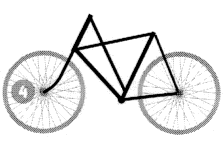
|
5
Locomotief, "Modell Super de Luxe" (app. 1936 - 1955)
In pre-war brochures promoted as a unisex
bicycle. This design has got some similarities with the ladies' version of the
Dursley-Pedersen, but as far as we know there are no true precursors.
|
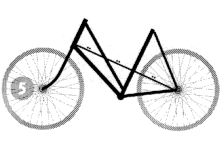
|
6
Girder frame, app. 1910. This is actually no real cross frame. Manufacturer:

Quadrant (built in license by Alt cycleworks from Leiden (NL),
Gazelle (until 1913)
Eysink
Schwager (until app.
1914)
Gruno
and many British precursors in that time.
|
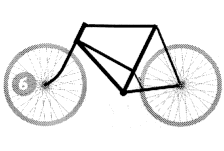
|
7
Batavus, Burgers, Empo, Phoenix, Magneet
and several others built this type from the thirties until the fifties in low numbers.
Opposite to model no. 4, the tube descending from the seat tube lug is not connected
to the lower steering tube lug but ends somewhere halfway the down tube. The exact
connection point where this tube ends depends on the manufacturer and sometimes on the
frame size as well.
 Magneet built several subtypes of this
model. Under the name Stafiets they were sold as normal roadster or as carrier
bicycle, but also as a light ladies' sports bicycle. Magneet built several subtypes of this
model. Under the name Stafiets they were sold as normal roadster or as carrier
bicycle, but also as a light ladies' sports bicycle.
|
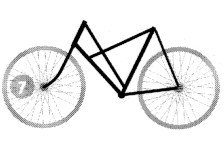
|
8
This frame was built by Durabo from Woudenberg (probably in the fifties).
Wilhelmina from Haarlem made an almost identical carrier bike version in
about 1950). |
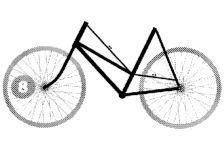
|
9
The two cross tubes are halfway bent and ovalized. On the point where they touch each
other they are soldered without a socket. So it just looks as if the tubes were straight.
They were made in about the fourties/fifties by Adek (with 28"
wheels, very light front forks and small double tubes from halfway the seat tube to the
rear dropouts) and by Gruno (wheel-size 26", without extra double
tubes to the rear dropouts). |
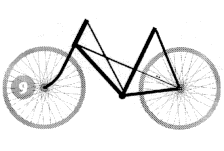
|
10
The typical Union cross frame with double tubes ending behind the bottom
bracket on the chain stays (1950 - 1959). |
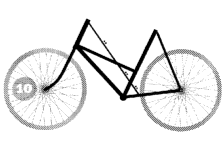
|
| Note: In the images, two tiny points besides a tube mean
that this part of the frame consists of double tubes (duplex). |